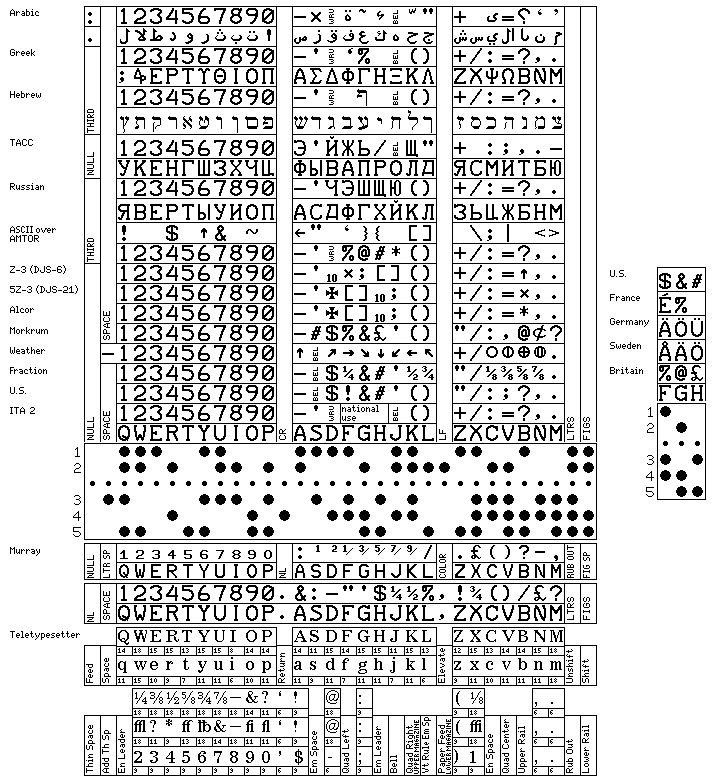Teaching Binary with the ITA2 Telegraph Emulator
A hands-on approach to understanding early digital communication
 ITA2 Telegraph tape showing encoded message
ITA2 Telegraph tape showing encoded messageMaking Abstract Concepts Tangible
This ITA2 emulator is a practical teaching aid. By making abstract encoding concepts visible and interactive, it introduces students to a key concept in computing and telecommunications: binary representation - how text becomes patterns of ones and zeros. While we often teach this abstractly, seeing the actual holes appear helps students grasp how physical systems can represent digital information.
ITA2 (Baudot-Murray) Telegraph Type Emulator
Type a word in the input below to see its representation on the ITA2 tape.
Historical Context: From Telegraph to Computing
The ITA2 (International Telegraph Alphabet No. 2) code, also known as the Baudot-Murray code, was developed in the 1920s as a refinement of Émile Baudot’s original telegraph code from the 1870s. These early telecommunication systems had a direct influence on later computing developments:
- The 5-bit encoding scheme was an early example of character encoding
- The character set limitations (only 32 possible combinations with 5 bits) led to the ingenious LETTERS/FIGURES shift mechanism
- This system was used well into the 20th century for teletype machines
Learning State Machines Through Play
The LETTERS/FIGURES shift mechanism introduces state machines naturally. Students discover through experimentation that the same pattern can represent different characters depending on the current mode. This hands-on experience with state-based encoding prepares them for more complex computing concepts.
For example, the bit pattern 00011 represents:
- The letter ‘A’ when in LETTERS mode
- The number ‘1’ when in FIGURES mode This dual interpretation based on state is fundamental to how computers work with data.
Classroom Activities
Here are some ways to incorporate the ITA2 emulator into teaching:
- Code Breaking Challenge: Have students decode messages encoded as ITA2 patterns
- Efficient Encoding: Discuss why the shift mechanism was important for saving bandwidth
- Evolution of Encoding: Compare ITA2’s 5-bit code to ASCII (7-bit) and Unicode
- Physical Computing: Connect this historical system to modern microcontrollers like Arduino
Accessibility Benefits
Beyond its historical interest, this approach helps students with different learning styles:
- Visual learners see the patterns
- Kinesthetic learners interact directly with the encoding process
- Conceptual thinkers can explore the mathematical aspects of information theory
Implementation Details
The emulator is implemented in JavaScript and can be easily integrated into any web-based learning platform. The code is modular and customisable for different teaching contexts. You can find the source code and try the emulator yourself at: GitHub Repository